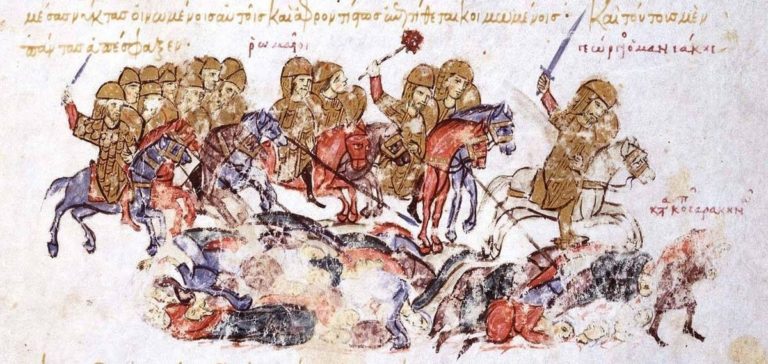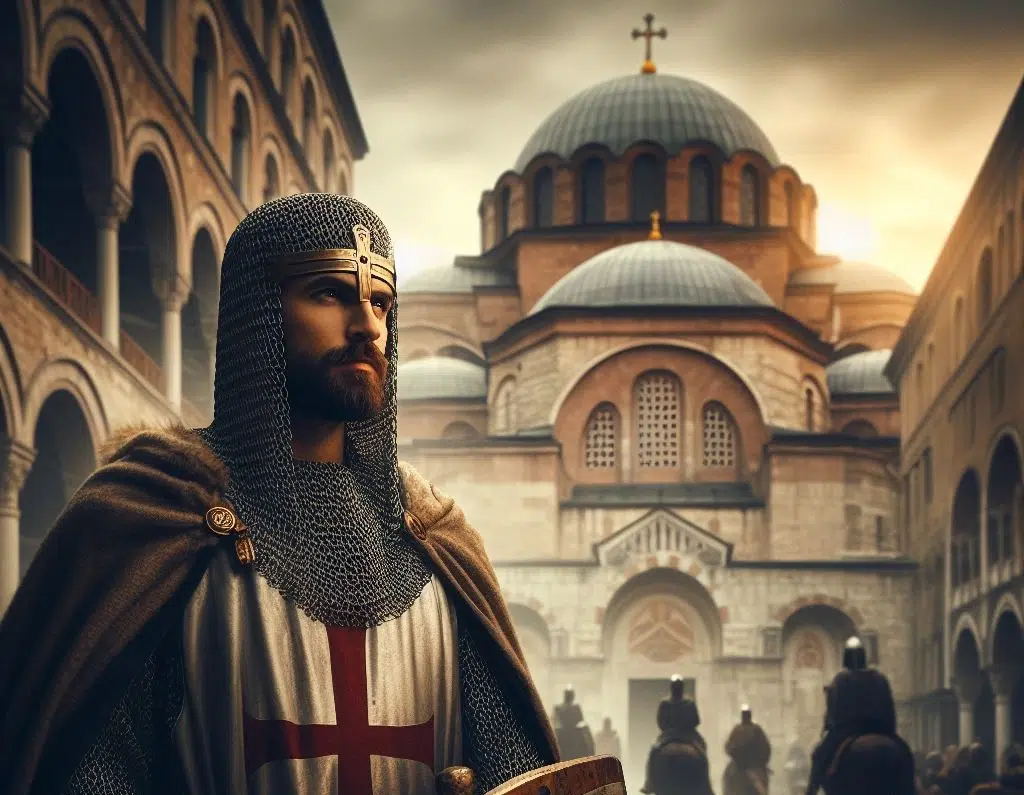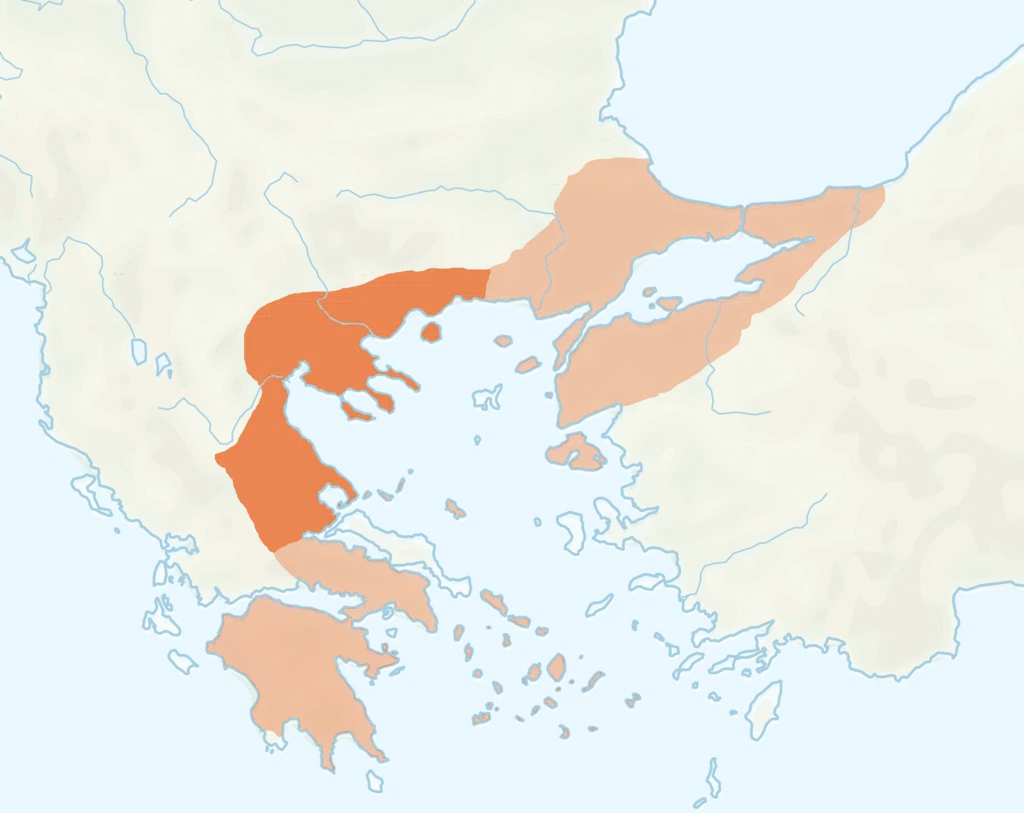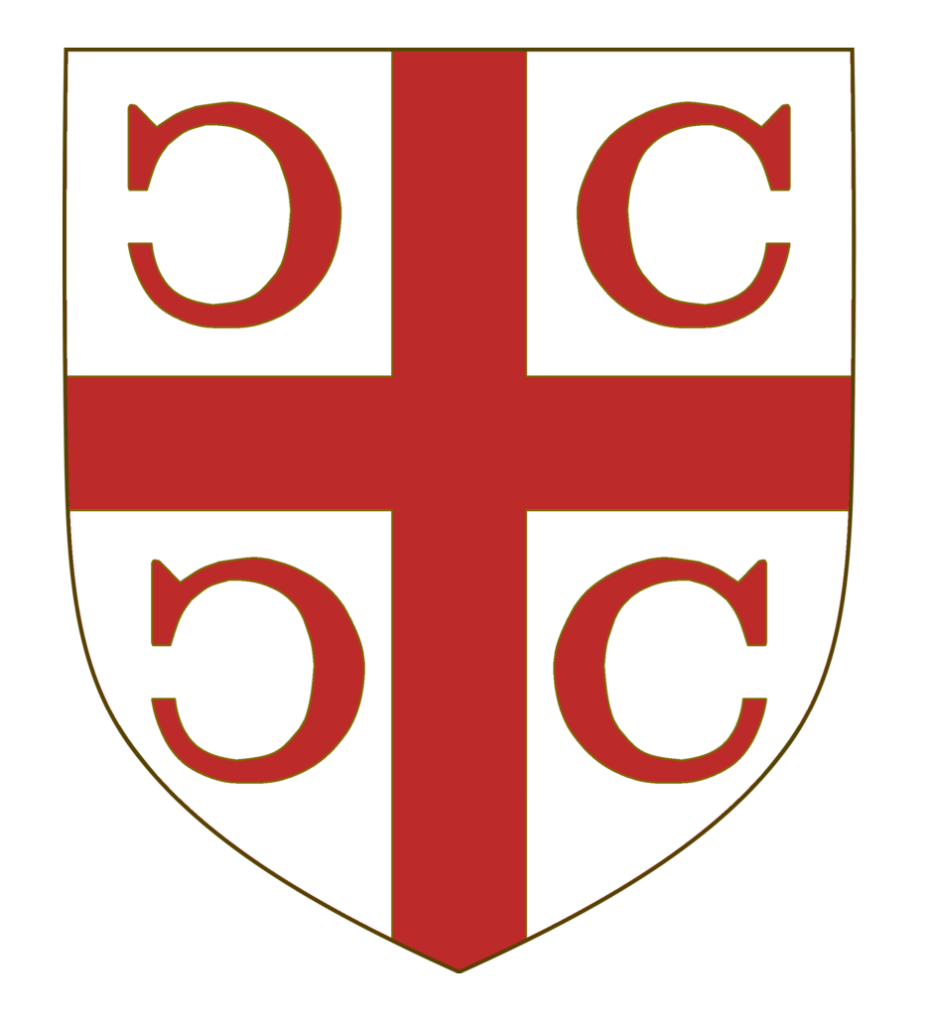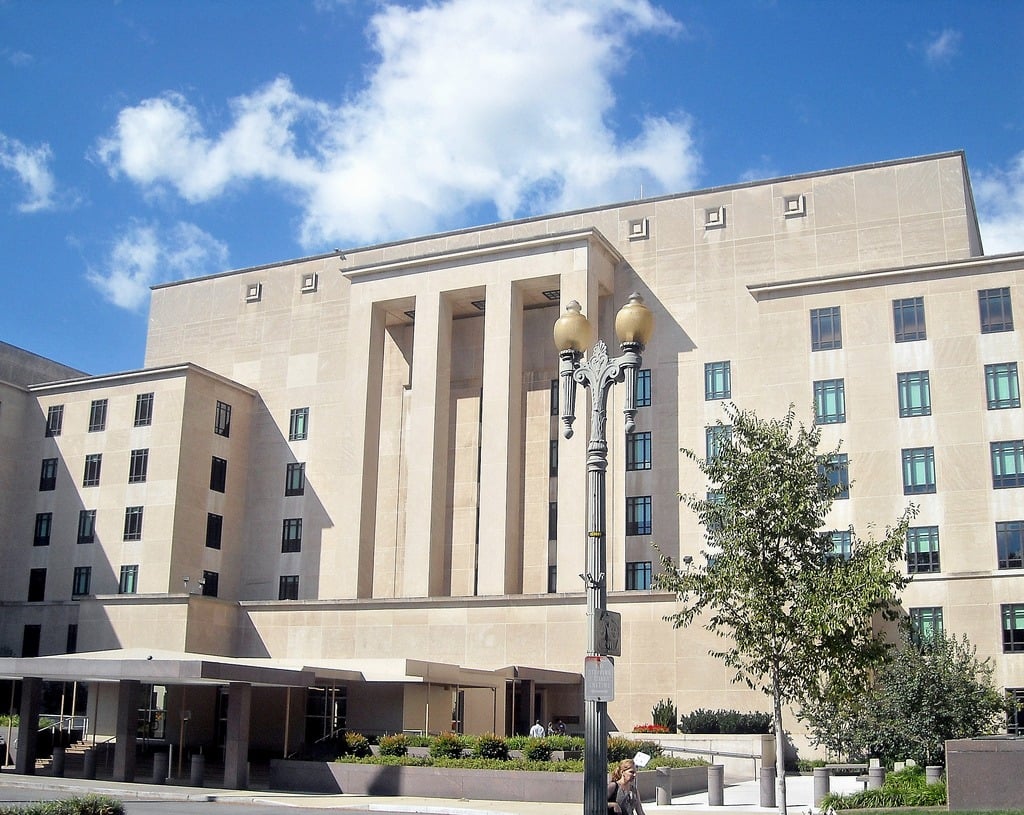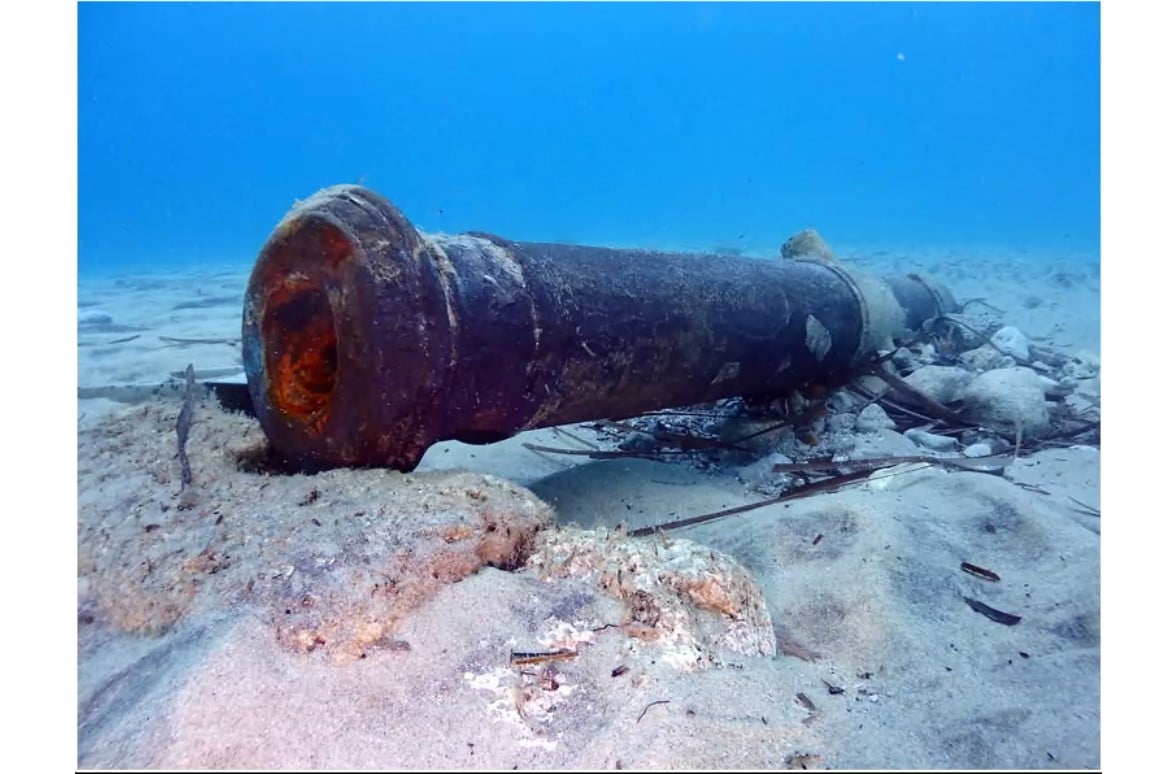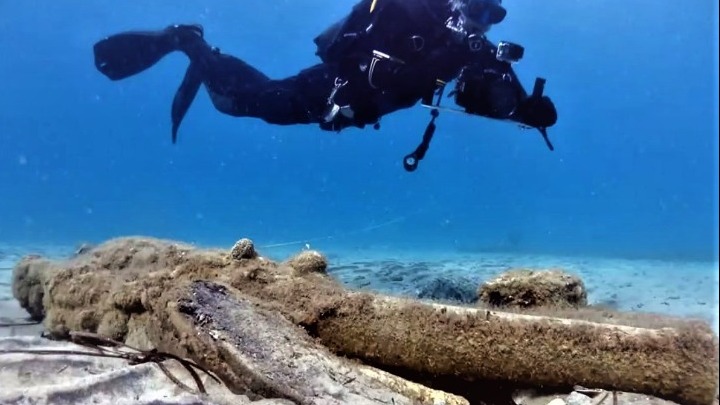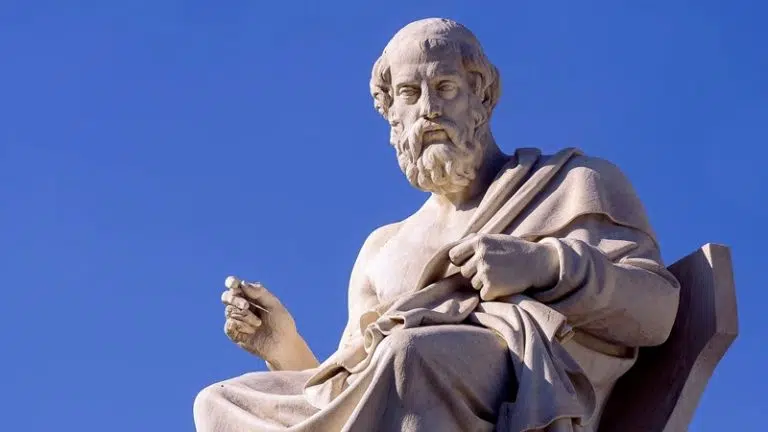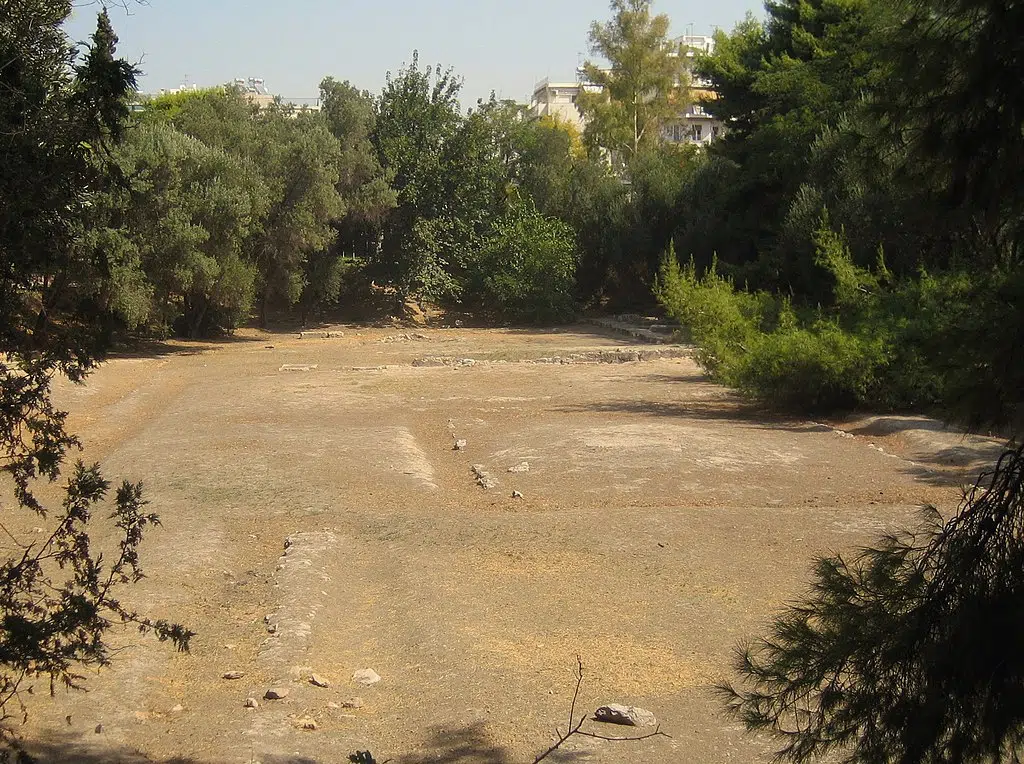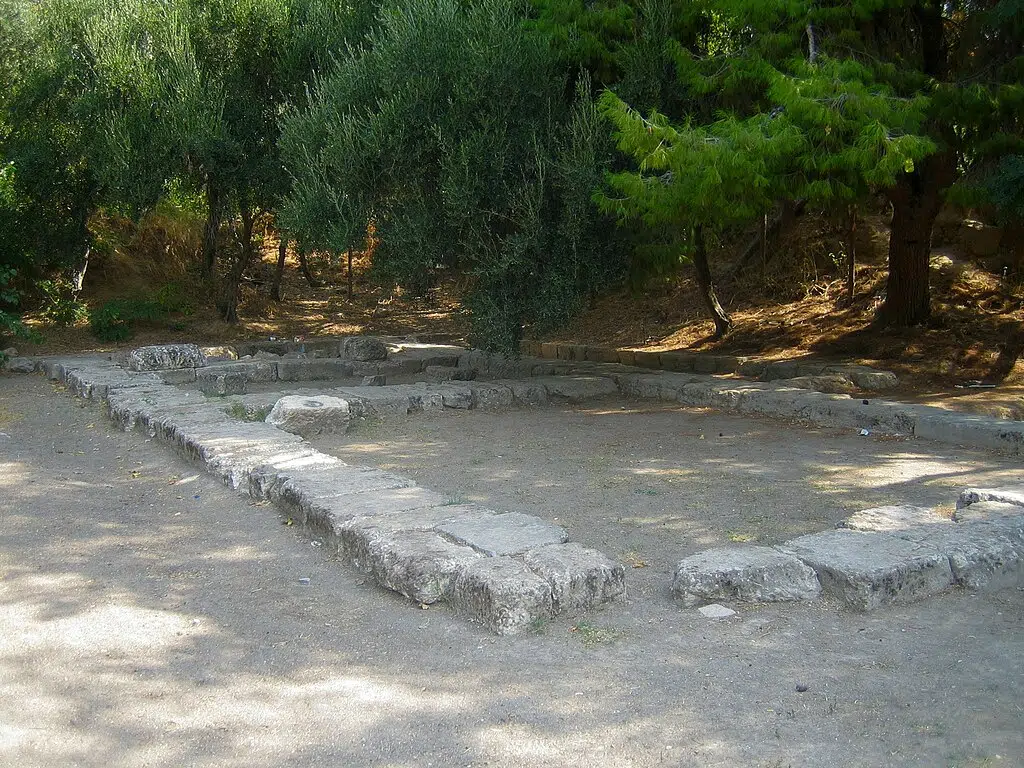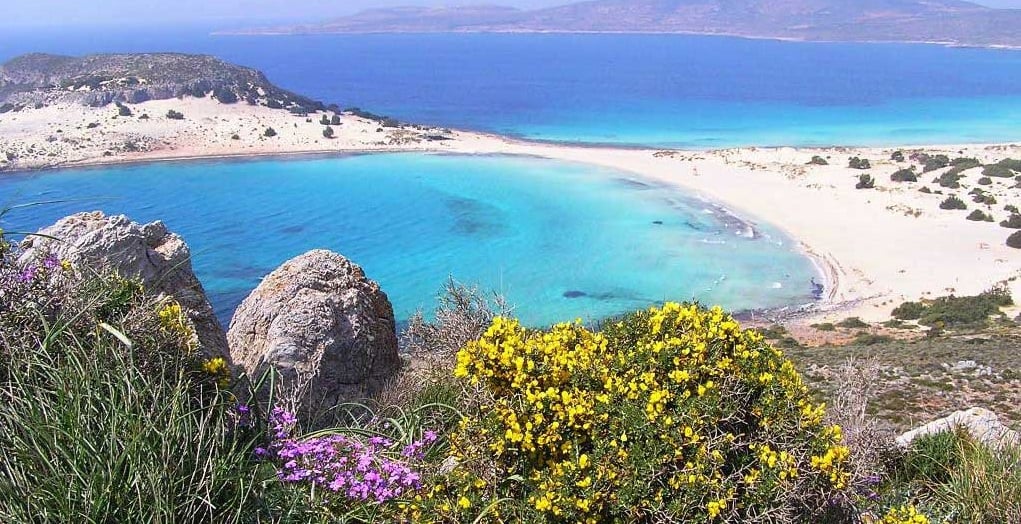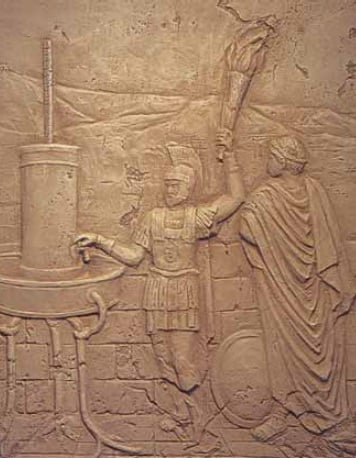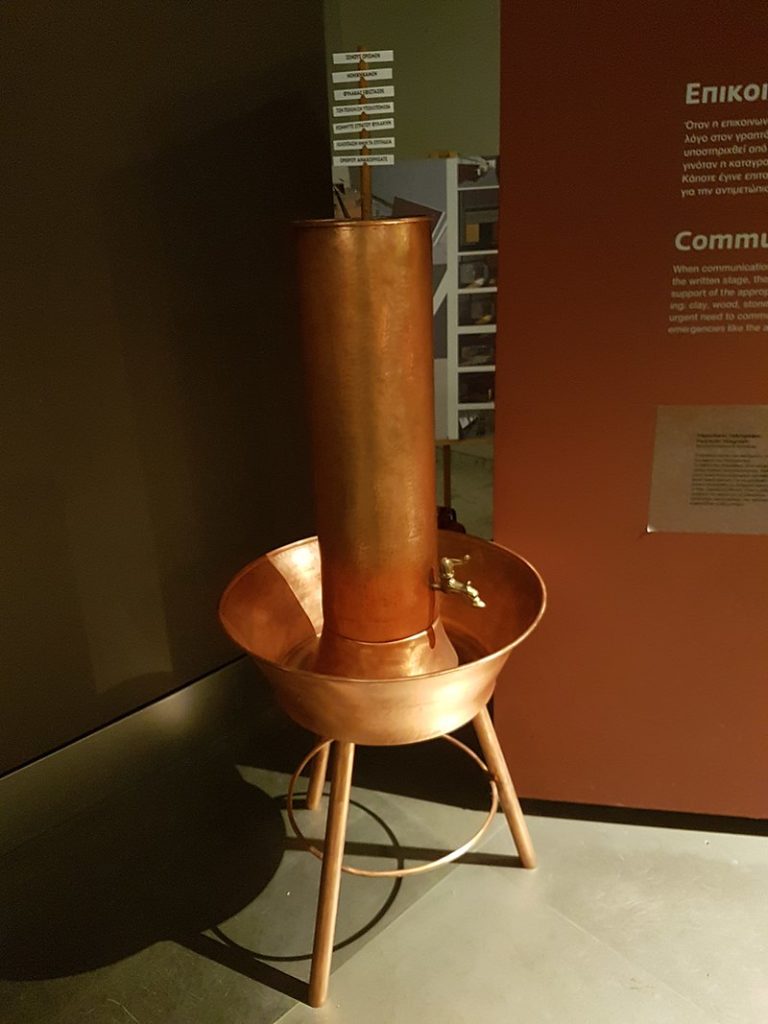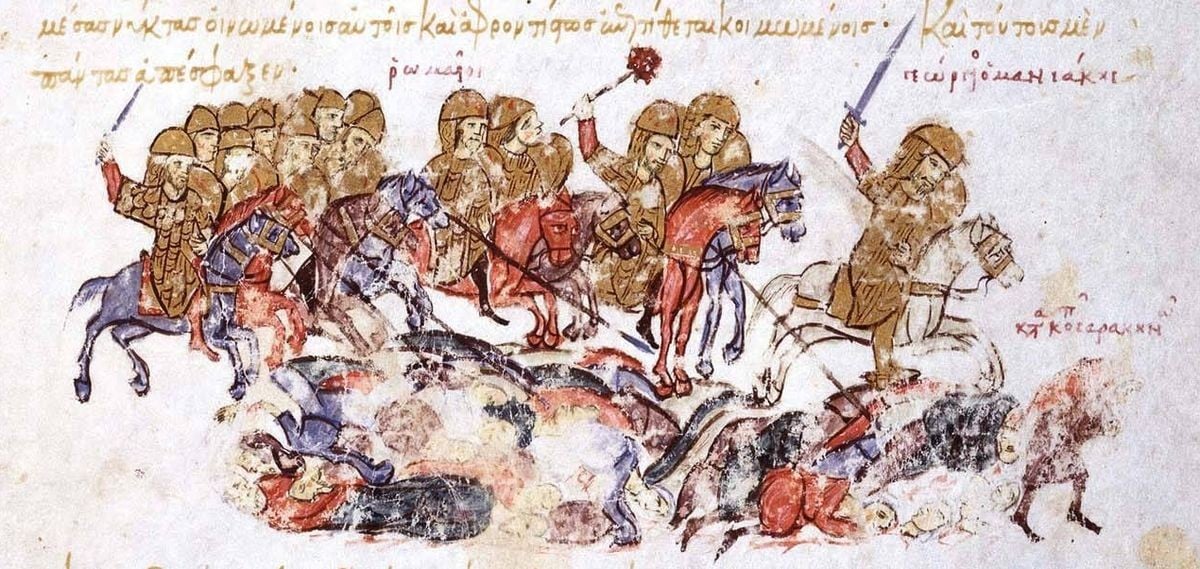
After the tremendously successful reign of Basil II, the eleventh century signaled a turn of fortunes in a far more negative direction for the Byzantine (Eastern Roman) Empire, marked by military defeats and decline.
However, George Maniakes, a Byzantine general, was an exception to the rule during what was otherwise a lackluster period of the Byzantine Empire. Maniakes stood quite literally as a giant on the battlefield owing to his imposing stature, but he was also a supremely capable tactician and commander.
The historian John Julius Norwich described Maniakes as “the glorious, tempestuous, ill-starred” preeminent Byzantine general of his age. Indeed, Maniakes’ life was marked by the highest of highs and the lowest of lows. He was an excellent commander who fought in Anatolia, the Middle, East, Sicily, and Greece. But he was also prone to bouts of fury and was ill-adapted to the intrigues of the Byzantine imperial court.
Character and appearance
According to contemporary sources, Maniakes was an imposing figure both in terms of his stature and the aura of his personality. He was tall and well-built and possessed a disposition prone to anger. The soldiers under his command were keen to follow him and his enemies feared his reputation.
Michael Psellos, a Byzantine monk, historian, scholar, imperial courtier, and music theorist, had seen Maniakes in person and gave an account, writing that “I have seen this man myself, and I wondered at him, for nature had bestowed on him all the attributes of a man destined to command.”
“He stood ten feet high and men who saw him had to look up as if at a hill or the summit of a mountain,” Psellos continues in a rather exaggerated fashion. “There was nothing soft or agreeable about the appearance of Maniakes. As a matter of fact, he was more like a fiery whirlwind, with a voice of thunder and hands strong enough to make walls totter and shake gates of brass. He had the quick movement of a lion and the scowl on his face was terrible to behold.”
From a lowborn to a Byzantine general
Little is known about Maniakes’ early life. His father was called Goudelios and was possibly of Slavic or Armenian origin. However, we can assume that Maniakes was not born into wealth or status based on the start of his career in the Byzantine army as a baggage handler.
Maniakes’ first appearance in the historical records was in 1030. By the age of 33, he had risen through the ranks to become a strategos, a local district commander. At this time he held authority over the provincial fortress of Telouch (modern Duluk), the capital of the thema (military district) of the same name on the Anatolian-Syrian border.
Maniakes came to prominence when a force of about 800 Arab horsemen besieged Telouch. The Arabs arrived falsely proclaiming that the Byzantine Emperor Romanos III Argyros had been killed in battle. The Mirdasid Emirate of Aleppo had indeed defeated Romanos at the Battle of Azaz but the emperor escaped and was very much alive.
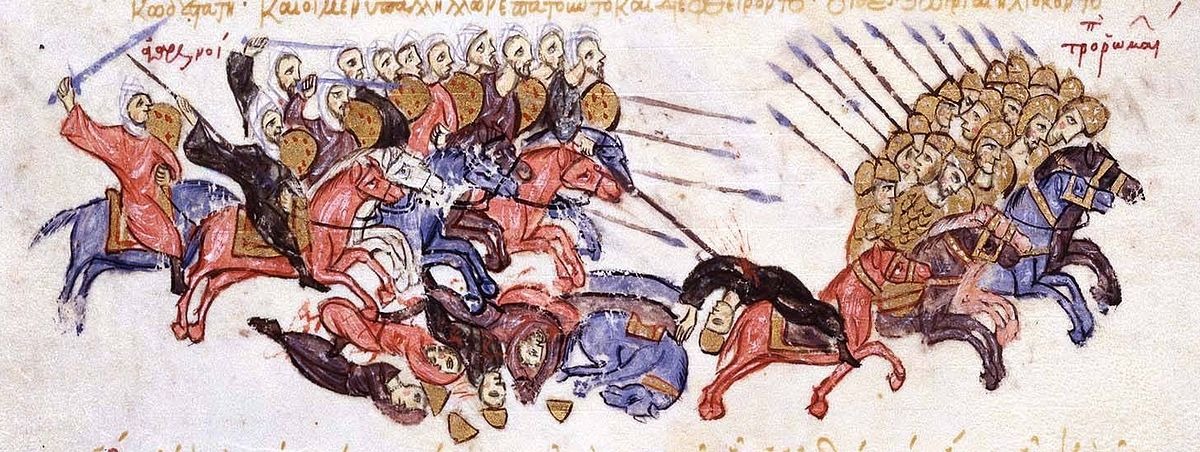
Maniakes and his men were outnumbered and watched as the Arabs paraded trophies they had won at Azaz beneath the walls of Telouch. Maniakes agreed to surrender and sent the enemy wagons of food and wine as a gesture of goodwill.
However, the Byzantine general’s surrender was merely a ploy to goad the Arabs into a false sense of security. Maniakes waited until night had fallen and the enemy had become drunk on all the wine he had sent them before springing his trap. He sallied out from the fortress with his men under the cover of darkness and slaughtered the besieging Arabs.
After this victory, Maniakes sent Romanos blood-stained bags full of the severed ears and noses of the enemy as well as 280 camels laden with booty that had been seized by the Arabs from the Byzantine baggage train at the Battle of Azaz. Romanos immediately promoted Maniakes to katepan (military governor) of the upper Euphrates Valley.
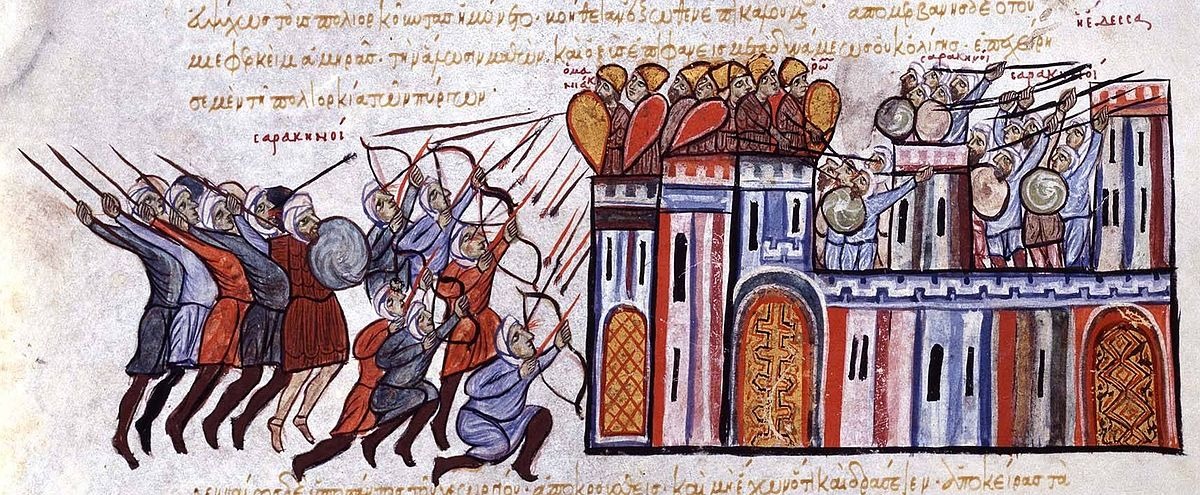
With greater power and resources now at his disposal, Maniakes turned his attention to the city of Edessa which had fallen from Byzantine control four centuries earlier. Maniakes launched a surprise attack at night and seized three of the city’s heavily reinforced towers.
Maniakes’ army was then besieged both by the inhabitants of the city and a large force sent by the Emir, but they were able to hold out until Byzantine reinforcement arrived, winning both the battle and the city.
George’s brilliance as a commander made him indispensable. Maniakes single-handedly prevented the collapse of Byzantine Syria after the Batte of Azaz & even captured the city of Edessa through his daring. Maniakes would later be sent to Italy & Sicily at the head of an army. pic.twitter.com/v3Lc2bpACr
— Varangian Chronicler (@Varangian_Tagma) September 1, 2022
Military Expedition to Sicily
In 1034, Emperor Michael IV, who had succeeded Romanos, appointed Maniakes as governor of Vaspurakan, a sizeable and significant thema on the Byzantine Empire’s northeastern frontier.
In 1038, Michael then appointed Maniakes as governor of the southern Italy thema and head of the military expedition to recapture Sicily. Sicily had been under Arab control since 965. From here, Arab pirates and raiders constantly harassed the Byzantine territories of Southern Italy. A civil war between the emir of Sicily and his brother provided the Byzantines with an opportunity to wrestle back control of the strategically important island.
The exact composition of Maniakes’ army is uncertain, but the core of his force was made up of Greek heavy cataphract cavalry (kataphractoi) supported by Armenian and Balkan infantry, as well as recruits from Southern Italy.

The Byzantine general also had a significant number of mercenaries under his command, including 300 Norman knights led by the D’Hauteville brothers, William Iron Arm, and Drogo, and Varangians led by the famous Harald Hardrada, who would later become the king of Norway. Hardrada would also have become the king of England if he had won the Battle of Stamford Bridge in 1066. There were also Lombard mercenaries from Italy.
The campaign was initially successful. Maniakes captured Messina and Rometta, despite the intervention of 5,000 Arab reinforcements, whom he defeated. From Rometta he advanced on the ancient city of Syracuse. The garrison at Syracuse held out long enough for the emir’s son, Abdallah ibn Muizz, to gather a force at Palermo and attempt to outmaneuver Maniakes, but the general learned of this and was able to set a trap.
The Byzantines surprised their enemy near Troina in the mountains of northeastern Sicily. Few details of the battle are known, but the Greek and Norman cavalry shattered the enemy and Maniakes won yet another victory. The garrison at Syracuse surrendered and the Byzantine army was greeted enthusiastically by the mostly Greek population who celebrated the end of 162 years of Muslim rule.
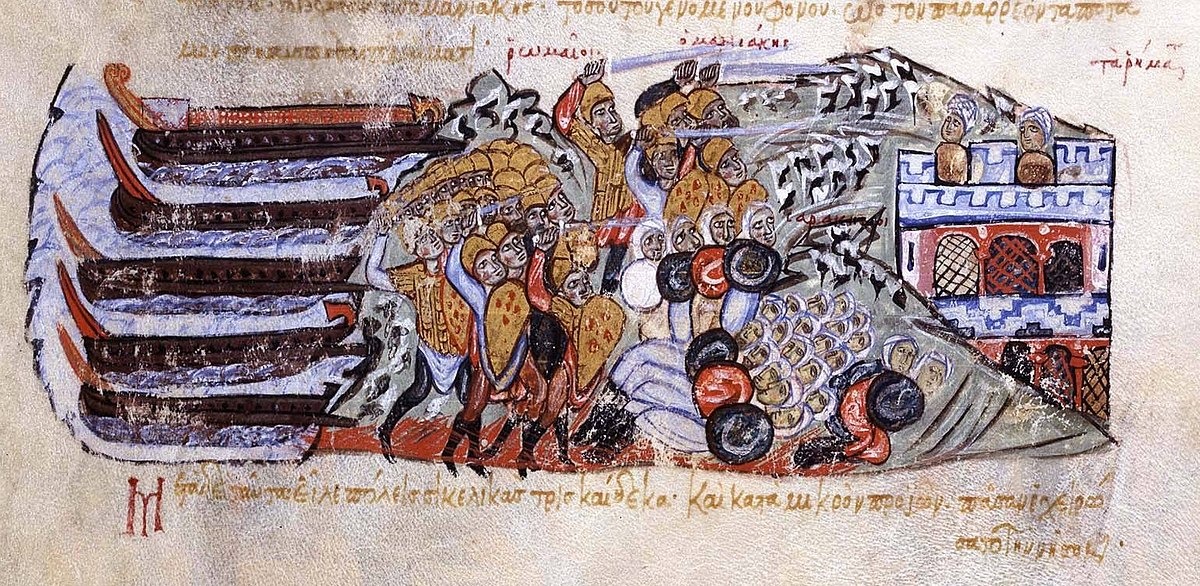
The expedition starts to unravel
All that stood between Maniakes and the complete reconquest of Sicily was Palermo. However, events started to take an unfortunate turn for the Byzantine general, and his principal vice – his temper – may have had a lot to do with it.
First, there was a dispute with the mercenaries, who felt that they should have a greater share of the loot. The Normans asked a Greek-speaking Lombard officer named Arduin to appeal on their behalf but Maniakes was enraged and had him stripped and beaten. This led to the Norman and Lombard mercenaries abandoning the expedition and going to Southern Italy, where they joined a rebellion against the Byzantines.
Next, there was the escape of Abdallah, the emir’s son. Maniakes blamed Stephen, the commander of the Byzantine fleet, for his escape, since his ships were supposed to be blockading the coastline. Maniakes’ temper flared again and he physically struck Stephen several times whilst denouncing him for laziness and cowardice.
This proved unwise as Stephen was Michael IV’s brother-in-law. The humiliated naval commander wrote to the emperor that Maniakes was a traitor and the Byzantine general was thrown into prison without trial.
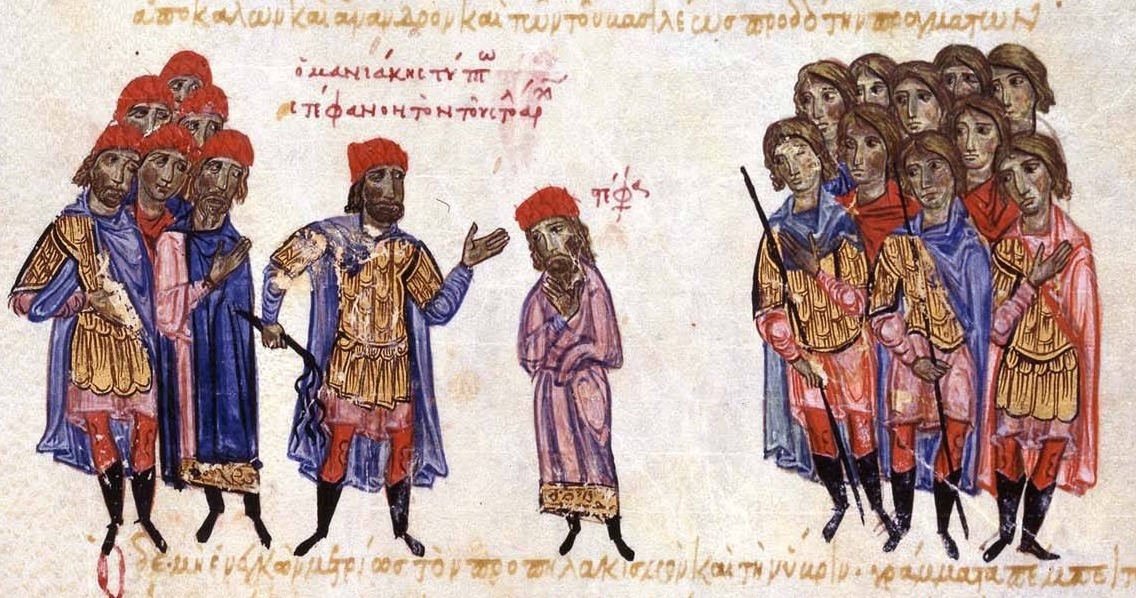
Return and military expedition to Southern Itlay
A year later, Michael IV died whilst Maniakes was still in prison. Meanwhile, Stephen had been given overall command of the expedition to Sicily. He proved utterly incompetent and all of Maniakes’ hard-won victories were undone. Only Messina held out, as the force there was commanded by a capable general.
At the same time, the Lombard rebellion – aided by the Normans – was spreading across Southern Italy and a succession of Byzantine Katepans failed to quash it. In 1042, Maniakes was released from prison and granted the ranks of Katepan and magister, the highest rank outside of the imperial family. His task was to crush the rebellion.
Maniakes landed in Apulia and proceeded to capture Monopoli, Matera, and Geovinaazo from the Lombard rebels and their Norman allies. However, the campaign was again interrupted by political intrigue before it could be completed.

The giant Byzantine general turns against the emperor
The seeds of rebellion were planted by a Byzantine aristocrat called Romanos Skleros who used his position within the imperial court to poison Emperor Constantine IX against Maniakes. Skleros’s sister was the emperor’s mistress, so he held considerable sway over Constantine.
Maniakes and Skleros were not particularly fond of each other. The pair maintained neighboring estates in Anatolia and had apparently feuded over land. According to the historical account of John Skylitzes, Skleros pillaged the villages belonging to Maniakes and “desecrated the marriage bed” with his wife. Whilst Maniakes was busy fighting in Italy, Skelors may have been the one responsible for persuading the emperor that the Byzantine general was plotting a rebellion.
There are at least two accounts as to what happened next. The first is that Constantine IX sent a courtier named Pardus to replace Maniakes as leader of the military expedition. The emperor would offer Maniakes a pardon if he handed over command to Pardus peacefully.
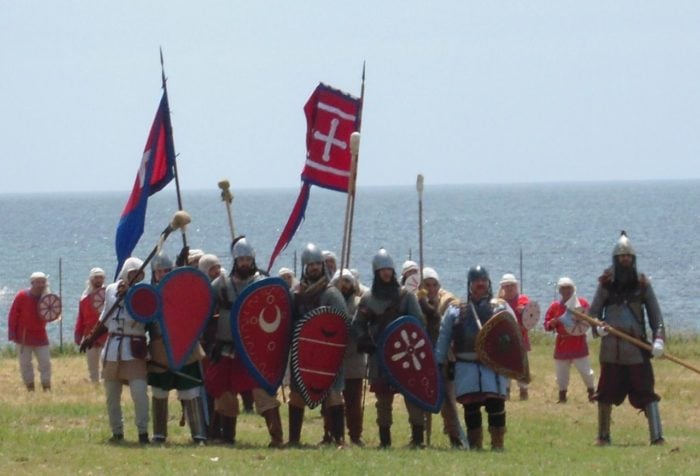
According to this version of events, Parduls was not very tactful in his approach to Maniakes. He publicly accused and approached the general of treachery. Naturally, hurling a tirade of abuse at a veteran warrior famous for his enormous stature and even more enormous rages was not a very wise decision. As Maniakes raised his fist to strike, Pardus appealed to the soldiers in the general’s army to concur that this was a clear sign of his disloyalty. However, the soldiers had fought beside Maniakes through thick and thin and were unimpressed by Pardus. They killed him themselves without Maniakes having to lift a finger.
The other account is a far more personal tale of revenge. In this version of events, it was Romanos Skeloros who was sent to confront Maniakes, either to take charge of the army, as in the case with Pardus, or to confront him in battle. In either case, it did not end well for Skleros. Maniakes tortured his old rival to death by sealing his eyes, mouth, ears, and nose shut with excrement.
Whatever the truth may be, it is known that Maniakes’ troops proclaimed him emperor and he set sail for the Greek mainland to challenge Constantine IX. The emperor again sent an envoy to reach terms but when these were ignored he began to assemble his own army.
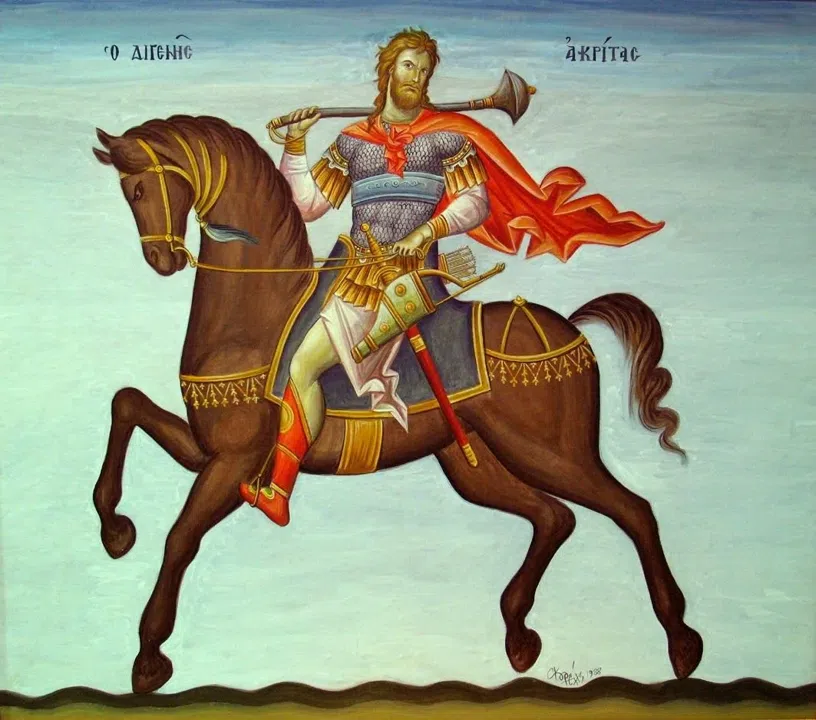
Maniakes landed at Dyrrachium and intended to march along the ancient Roman road Via Egnatia to Constantinople via Thessaloniki. Constantine IX selected the eunuch Stephen of Pergamon to lead his army against Maniakes. This was an odd choice given Stephen’s lack of military experience.
The two forces met in battle in the summer of 1043 at the village of Ostrovo (Anissa) near Lake Vegoritida in Northern Greece. Despite being outnumbered, Maniakes seized the initiative and cast the imperial army into disarray with a daring cavalry charge.
At this point, the imperial army was close to breaking and some of Stephen’s troops already began to proclaim Maniakes as emperor. However, the grizzled Byzantine general who had stood as a giant upon the battlefield was struck by ill luck. Maniakes received a mortal wound, either from a lance or an arrow. He attempted to staunch the bleeding but wheeled and fell from his horse. The imperial soldiers rushed to cut off his head and bring it to Stephen.
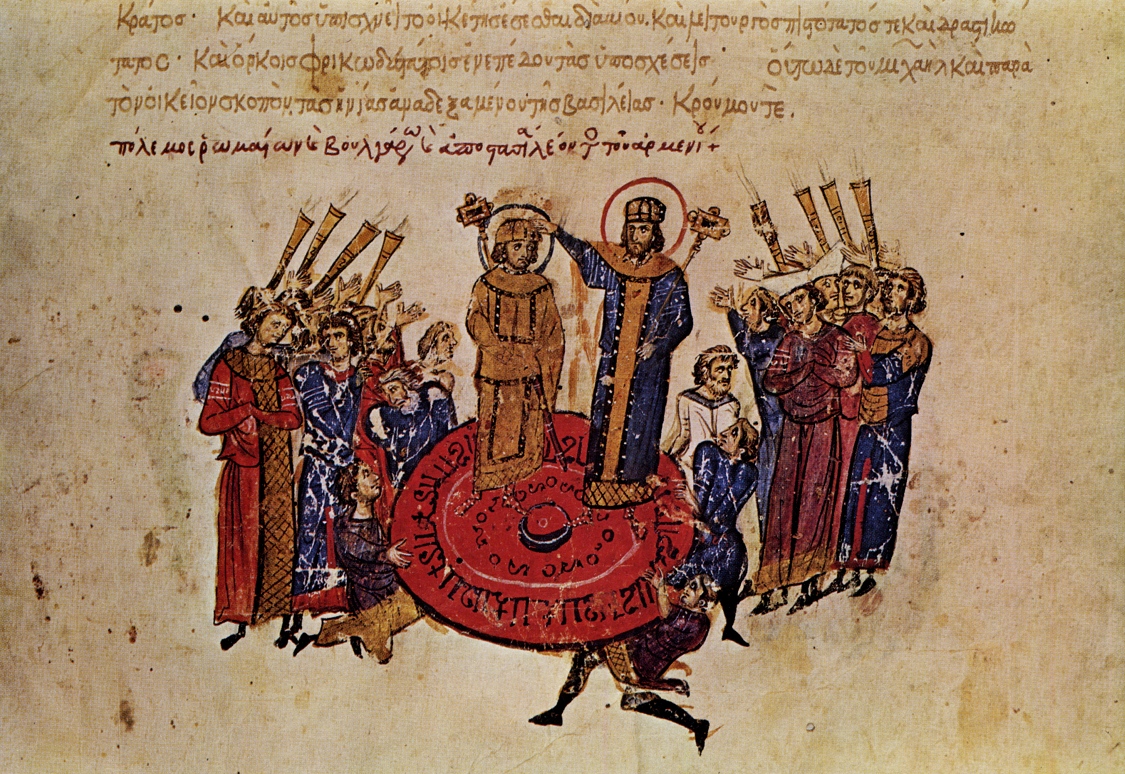
Although Maniakes had gained the upper hand in the battle, his death caused his army to lose resolve and his men broke and fled. The battle was lost and his captured soldiers were paraded in Constantinople seated backward on donkeys with their heads shaved and the words “shameful refuse” written across their bald patches. The head of Maniakes was placed on a pike and led the procession until it reached the Hippodrome where it was displayed for all to see.
According to Micael Psellos, when Maniakes was defeated, the emperor “with the air of a man who has been delivered from some great wave that was about to overwhelm him… gave thanks to God.”
All that remains is to wonder what would have happened if Maniakes had succeeded in his bid to claim the Byzantine throne. Would his military prowess have led the Byzantines into a new golden age, or would his quick temper and political ineptitude have led to ruin?



